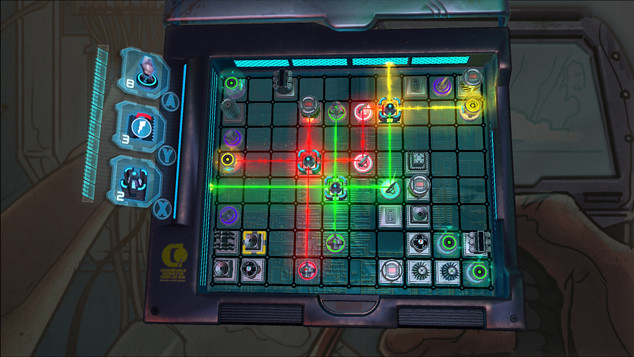Its ability to constantly under-sell and effortlessly over deliver is the secret best thing about Visceral Game’s Dead Space franchise. The original Dead Space beat Resident Evil 5 by six months and still holds the title as the current generation’s premier survival/horror. Dead Space Extraction flopped commercially, but it was a great game and sported some of the finest visuals on Nintendo’s underpowered console (read my review from last fall!). Finally, the Dead Space 2 multiplayer beta, something I assumed to be nothing more than a bullet point for the back of the box, wound up being a ton of fun. It’s practically Dead Space’s job to casually conceal its latent, macabre splendor.
Dead Space Ignition is a prequel of sorts to Dead Space 2. One of the hottest trends over the last few years had been to release a downloadable precursor for a big budget game. Fable 2, Dead Rising 2, and the upcoming Red Faction: Armageddon are all sporting this method of buzz-generating entertainment, and EA’s looking do to the same with their best new IP of the current generation.
From a gameplay perspective, Ignition has almost nothing to do with slaughtering Necromorphs or 3rd person strategic dismemberment. The disconnect from the usual freak show is awkward, but apparently such is the sacrifices for a five dollar product. Anyway, what’s presented is a collection of three minigames loosely connected together by a brief narrative prequel.

The story is actually Ignition’s highest card, though that’s not saying much. Watching The Sprawl succumb to a Necromoprh outbreak through the eyes of an IT guy (Franco) and his semi-hot lady friend (Sarah) could have provided an interesting perspective on the imminent disaster. Unfortunately we’re treated to a plot that constantly mines reasons for Franco to go hacking into and out of stuff across The Sprawl. The “motion comic” cut scenes were universally awful and the animation had the consistency of a cartoon from the 80’s outsourced to Korea and accidently transformed into a flipbook. There’s a clear skill present in constructing a narrative around a series of arbitrary computer hacking minigames, so certain props are in order, just not enough to forgive a visual presentation that, to put it blatantly, sucks. On the slightly brighter side, the voice acting is pretty good.
The minigames don’t fare much better. First out of the gate was Trace Route, an unapologetic Dotstream and/or Art Style Light Trax clone. As a literal stream you’re tasked with outrunning a rogue AI to an infection point. Your stream has a few countermeasures to thwart your opposition, but the real enemy’s the obstacle course in front of you; there’s a ton of stuff to slow you down and a good number of boosts to speed you back up. In theory this would operate like a 2D version of Tron or something, but in practice it’s a poor controlling, unwieldy time suck that favors luck over skill or route memorization. I have to give Trace Route some credit for being the only game not succumb to trial and error or button mashing, but that’s easily forgotten with what it lacks in originality

The second game was System Override, which is Ignition’s attempt at tower defense. At first it seems kind of cool; it takes a familiar system, but then spins it around so you’re the one sending out different classes of drones to destroy towers. Unfortunately it buries itself in needless convolution, the cure for which typically involves mindlessly spamming waves of drones out and hoping that it works. In theory a well thought out strategy would be possible to execute, but what’s the point when proverbial button mashing and crossed fingers are enough to get the job done?

Last was Hardware Crack, the least inspired, yet most fun of the bunch. Hardware Crack operates as a laser guiding minigame where you must use a limited number of reflectors to aim a laser at a point elsewhere on the map. Conflict arrives when multiple lasers have to go to different spots and you need to figure out a way to not cross the streams while battling a timer. More variables eventually come into play, although they weren’t explained with the greatest of clarity. Laser/mirror puzzles are something we’ve all done a dozen times else ware, sure, but I’m a sucker for those and I thought it was pretty fun anyway. Hardware Crack, like the other two games, supports a variation of it system for some co-op action. Unfortunately the friend I tried to play Hardware Crack with was red/green colorblind, meaning she couldn’t distinguish her lasers from my own. Nice.
All of the minigames are augmented by your rig leveling up, which usually translates to an increased number of variables for each respective game. The complication is needless, as it only serves to add convolution to systems you’re simply trying to rip through as fast as possible. A couple branching paths are also present throughout the narrative, incentivizing a reason to go back, should you muster the courage.
